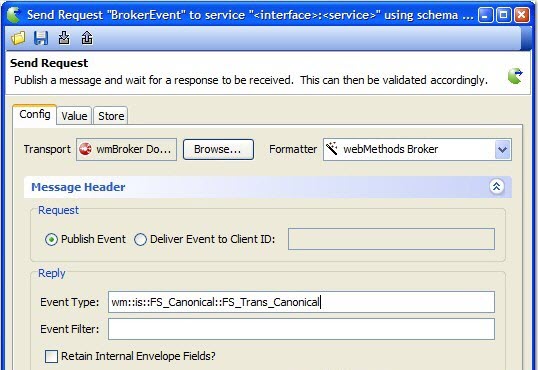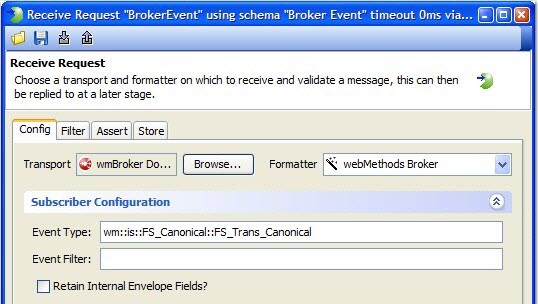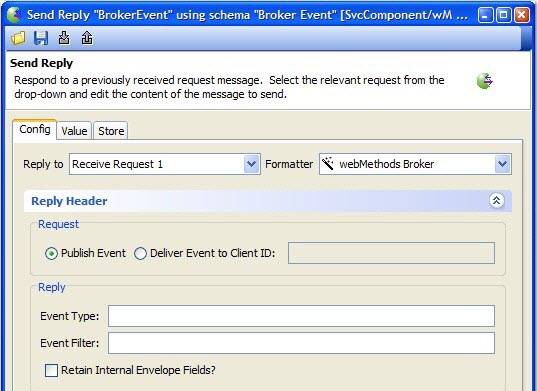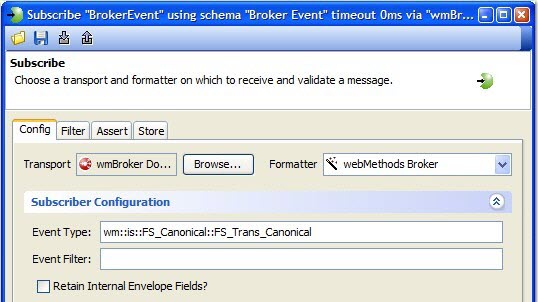Message actions for webMethods Broker documents in tests
In Rational® Integration Tester, you use various configuration options to publish and capture (subscribe to events) broker documents.
For more information, see Integration Tester Reference.
Send request and publish actions
The following information is used for the Send Request and Publish actions:
- Whether to publish or deliver the broker event. If you are delivering, you must specify the message and destination client ID to which it is delivered.
- The event type name and optional event filter string. For more information, see webMethods Broker Client Java™ API Programmer's Guide.
- Whether to retain internal envelope fields (disabled by default).

Receive reply action
The Receive Reply is used with a Send Request action. Therefore, the only information that is required is the ID of the request to which you want to reply.

Receive request
The following information is used for the Receive Request action:
- The event type name and optional event filter string. For more information, see webMethods Broker Client Java™ API Programmer's Guide.
- Whether or not to retain internal envelope fields (disabled by default).

Send reply
The Send Reply is used with a Receive Request action. In addition to the ID of the request to which you are replying, the following information is required:
- Whether to publish or deliver the broker event. If you are delivering, you must specify the message and destination client ID to which it is delivered.
- The event type name and optional event filter string. For more information, see webMethods Broker Client Java™ API Programmer's Guide.
- Whether or not to retain internal envelope fields (disabled by default).

Subscribe
When you are using the Subscribe action to intercept broker events, the following information is required:
- The event type name to which to subscribe.
- An optional event filter string. For more information, see webMethods Broker Client Java™ API Programmer's Guide.
- Whether or not to retain internal envelope fields (disabled by default).
